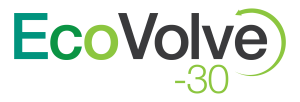Feeling boxed in by packaging decisions? You’re not alone. Who knew that choosing the best packaging material for your product could be so challenging. A box is a box, right?
Well, for folks not immersed in the packaging industry that answer would be “yes.” But for manufacturers wanting to beat the competition to the retail aisle, choosing the best packaging style for the buck can pose a problem. So, whether this is your first packaging decision for a new product or you’re looking for ways to cut packaging costs for an existing product, read on. The time to think inside and outside the box has arrived, and it’s made of versatile, cost-efficient paperboard.
Paperboard Folding Cartons – Flat-Out Benefits
- Paperboard packaging is kind to the environment: As a recyclable substrate, you can help your company advance its ‘going green’ goals.
- Folds flat for storage and shipping: This translates into decreased warehousing and transportation costs.
- Economical to produce: Folding cartons are faster and cheaper to produce than rigid boxes, thus revving up your speed-to-market timeframe.
- Brand power: You can save a major step in the production process by printing directly onto the paperboard for megawatt branding – even foil, embossing, stamping. If you’re looking to add product visibility, you can add in a die-cut, cellophane, or rigid window.
- Cushioning option: E-flutes (wavy squiggles found in corrugated boxes) can be added to folding cartons for extra strength & rigidity.
Situation: Cut Packaging Costs – Not Brand Power
A major appliance manufacturer came to Rohrer with a common industry problem: How could they change their packaging to save on production costs while keeping its consumer-pleasing look?
Previously they had been using an e-flute retail package for their line of appliance secondary parts kits. And they were quite attractive, and effective, thanks to the eye-catching laminated lithographed label. To the appliance manufacturer’s credit, their refrigerator parts could certainly win beauty contests from just the package label, but at what cost? Typically, litho-lam labels can be big budget busters, costing 50% more than direct printing.
Solution: Chipboard Carton Conversion
Rohrer recommended a package conversion from an e-flute corrugated box to a chipboard carton. Chipboard is sturdy yet thin, which means it can be cut, formed and easily folded. It also has special coatings for added strength and the super ability to print directly onto the chipboard.
By eliminating the separate operations of first creating the carton, printing the label and then applying it, major time and cost savings were achieved. And with any affixed label, there’s always the chance that it can get ripped or wrinkled during shipping – definitely taking away its shelf-envy look. But with chipboard – they could kiss that litho label goodbye, along with its associated cost burdens.
The appliance manufacturer uses three carton sizes to accommodate the varying weights and sizes of its kits, which totaled 18 SKUs. The new packages retain their original size and die line, thus simplifying the shipping for the manufacturer and shelving for the retailer. The direct-to-surface print capability uses a vibrant four-color process plus one spot color. The end result is a photographic image of the complete kit – rivaling that of the original lithographed label…and at a 50% savings thanks to direct printing. As a bonus, the shopper can more easily read the fine print such as the kit contents, country of origin, and other necessary info.
Results-to-Date
“[Rohrer] was highly recommended to us by colleagues who had worked with them. The design and production team we worked with lived up to that recommendation. They were helpful in providing us with the feedback we needed to engineer our package die lines, and they proved to us that photographic images could be printed directly on chipboard with a high-quality result–something we were not sure of at the beginning of the project. We are very proud of the result.” (Product Marketing Manager)
Want to learn more Strategies to Improve your Packaging Processes?
Sign up for our blog to receive the latest updates straight to your inbox!



